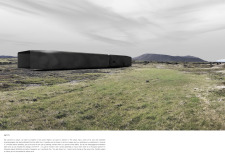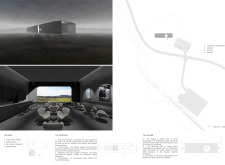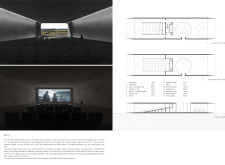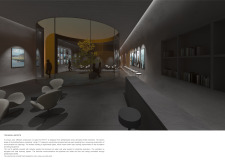5 key facts about this project
The building's layout is articulated through a series of interconnected volumes, promoting a sense of flow and accessibility. Each space within the project is designed with careful consideration of natural light, encouraging an open atmosphere. The use of large windows and strategically placed skylights enhances the spatial experience while reducing reliance on artificial lighting. By prioritizing user comfort and environmental connectivity, the design significantly enhances the overall functionality of the building.
Innovative Material Strategy
The architectural design utilizes a diverse palette of materials to create a harmonious balance between durability and visual interest. Concrete forms the primary structural element, offering robustness and thermal mass benefits. Complementing this are elements of glass, which facilitate transparency and create visual links to the exterior environment. Additionally, clad in wood, the building softens its presence, introducing warmth and human scale that contrasts with the more rigid materials.
Sustainable Practices and Green Integration
A distinct aspect of this project is its commitment to sustainability through green design principles. The incorporation of green roofs and living walls not only contributes to the building's energy efficiency but also enhances biodiversity within the urban context. These design choices reflect an understanding of ecological responsibility while providing outdoor green spaces that encourage interaction with nature. This integration of landscape within the architecture distinguishes the project, showing a modern approach to urban living and environmental stewardship.
This project stands as a noteworthy example of effective architectural design, characterized by its thoughtful integration of materials, sustainable features, and user-centric functionality. To explore the architectural plans, sections, and detailed designs which further illuminate the project’s framework and innovative concepts, readers are encouraged to engage with the full project presentation.


























